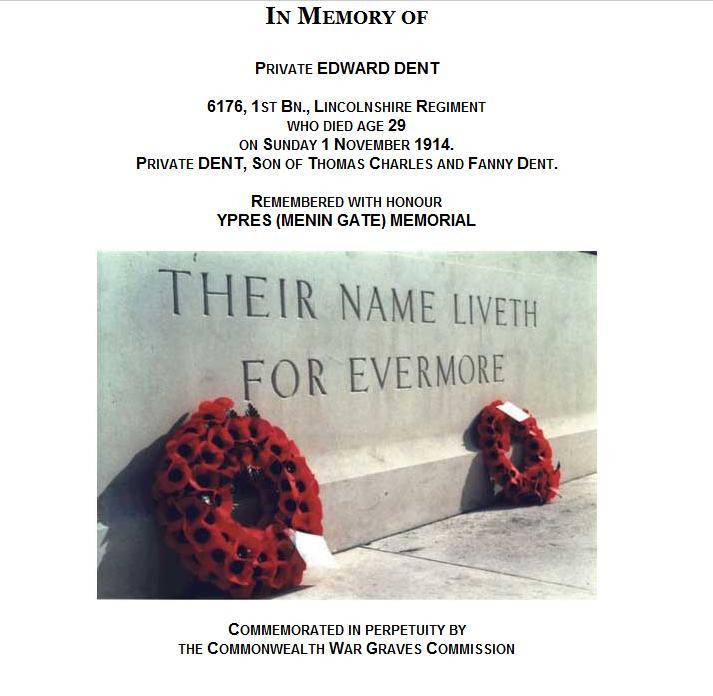Edward M. Dent
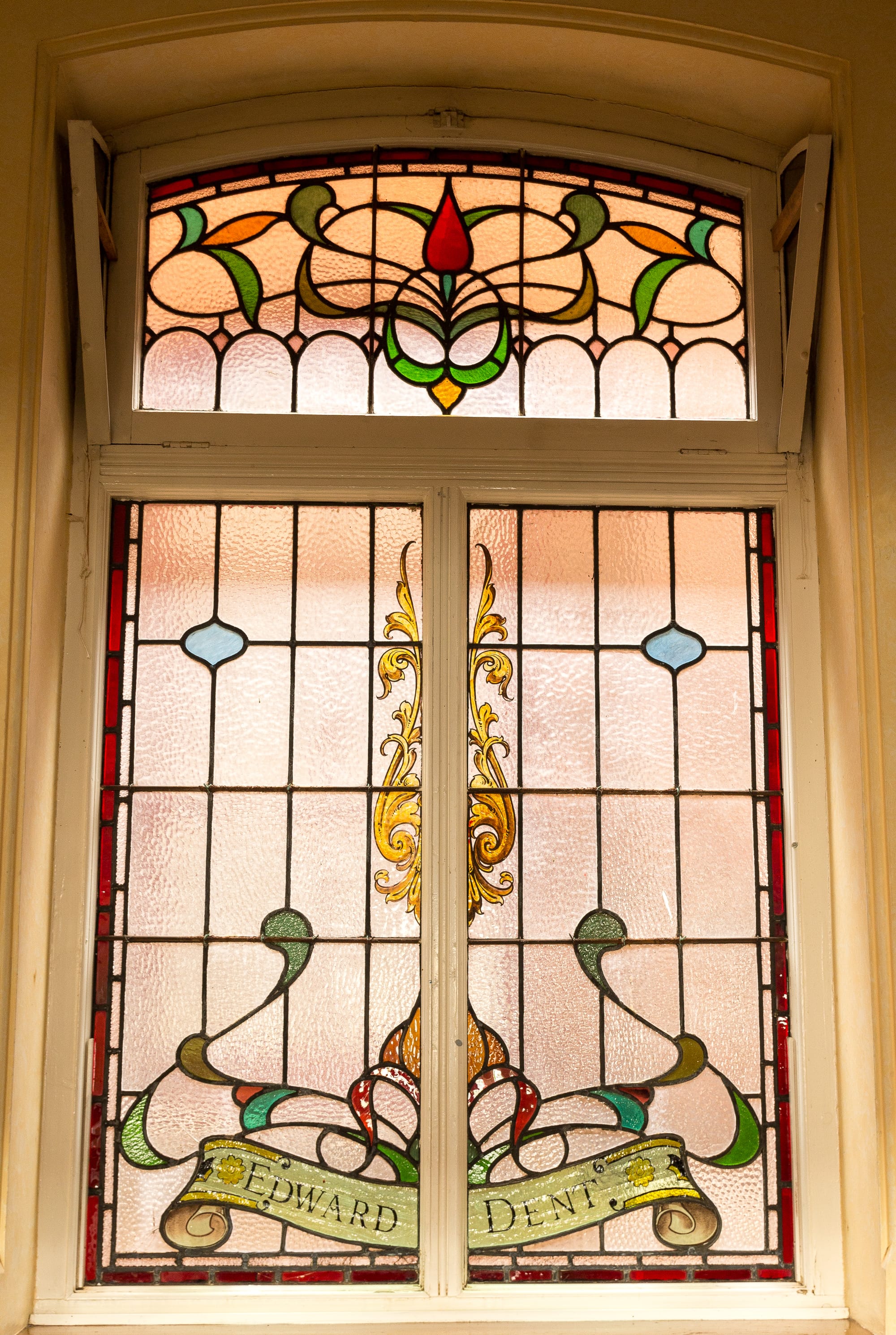
EDWARD AND HIS FAMILY
Edward was the first of the men commemorated to die in the war and in part two we will read about his military service and the circumstances of his death; but what do we know of Edward Dent before the First World War? What was his background and what was his family like?
His birth certificate shows that he was born on 18th June 1885, the son of Thomas Charles Dent and Fanny Dent. Their residence is given as Ashby. Charles was a labourer at the iron works, born in Brigg. Fanny was born in Withernsea, East Yorkshire. How they met is a cause of speculation, however they definitely settled in Lincolnshire to raise their family following their marriage in 1874. By 1881 the census shows them living in Wells Yard, a now demolished area just off the High Street near the present day Emmanuel Court. Edward’s middle name, Moore, must have come from his mother’s maiden name. Other similar records show that this was not unusual at the time.
Edward M. Dent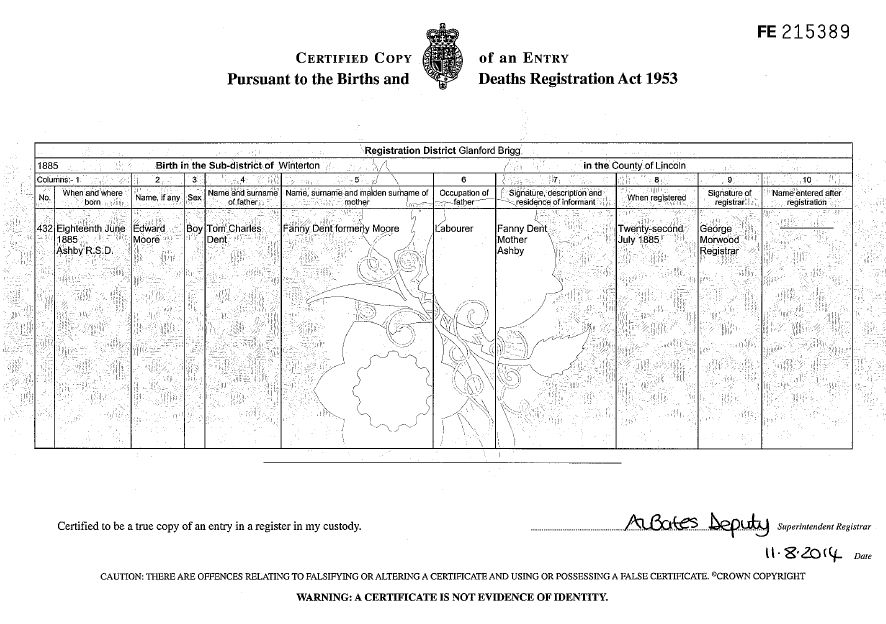 ’s birth certificate
’s birth certificate
There are no known photographs of Edward Dent, however we found pictures which we believe are of his mother and sister. The dates are estimated from the clothes and hairstyles.
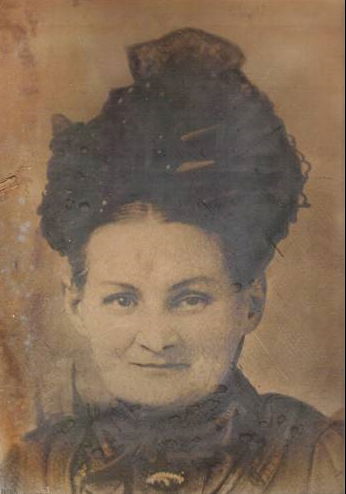
Photo believed to be Fanny Dent c.1880
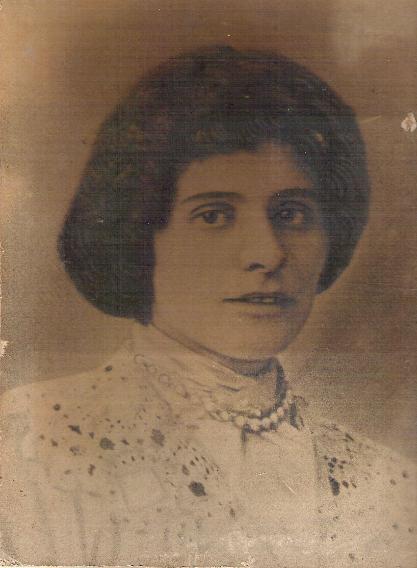
Photo believed to be Kate Dent c. 1915
Census returns from 1891 and 1901 show Edward growing up in Ashby with four of his brothers and sisters – Rose, Kate, George and Frank. His parents had also lost a son, David, aged only 3 in 1881.
In 1891 the family lived at The Screeds (originally known as Kirton Terrace) which many local people will remember as being opposite where St Bede’s school now stands. It appears from the census returns and pictures of the time (see below) to have been a close knit, working class community and it was home to more of the men named on the windows too. These people lived and died together which really brings home the loss that Ashby suffered.
A selection of photos of Ashby as Edward Dent would have known it. From the top they are The Screeds, Ashby High Street close to The Smootings and Ashby Wesley church showing both the new and the old church.
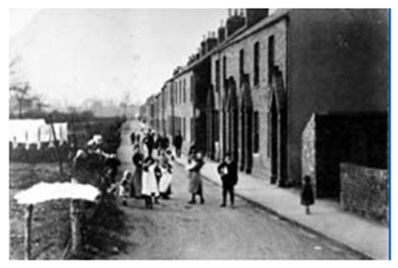
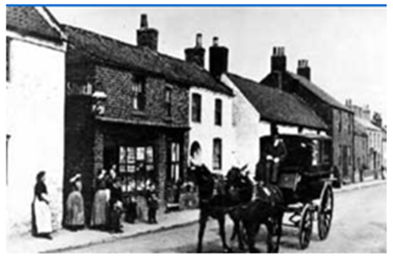
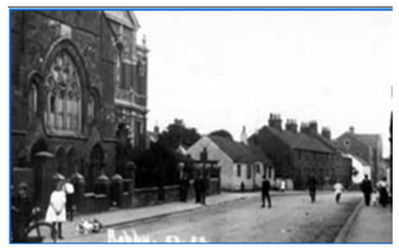
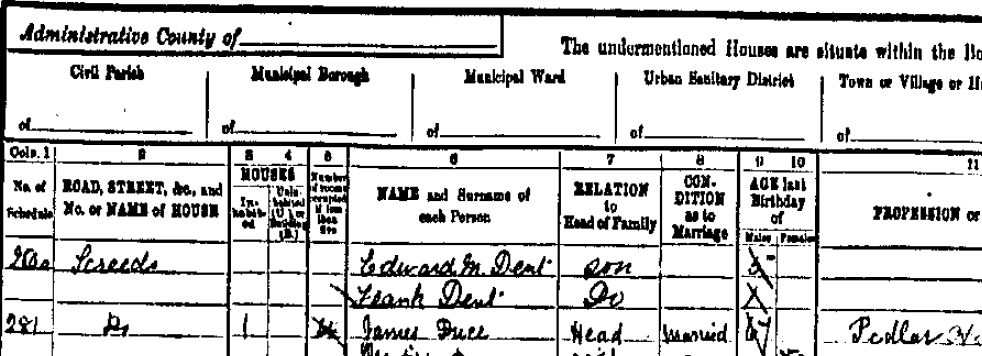
1891 census entry for Edward Dent
The Dents’ 1901 address is given as New Street. Ashby was expanding rapidly due to the growth of the steel works, and new housing was being built. The fact that New Street follows on from High Street indicates that it was probably one of the side streets off Ashby High Street. Looking at the picture below, North Parade seems a likely contender. Thomas Dent went from being a labourer in 1881 to being a boiler minder by 1901. Perhaps with a better job he decided to move his family to a more modern home.
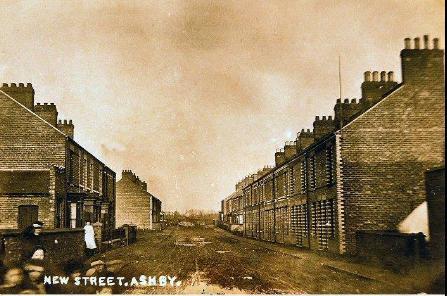
New Street Ashby. The photo appears to be Edwardian.
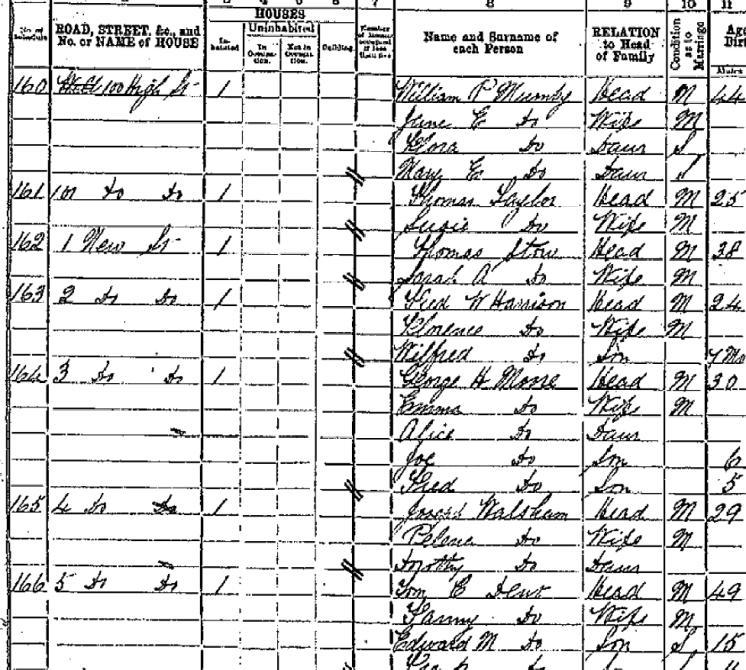
1901 census entry for Edward Dent
In 1911 Fanny Dent was listed at 56 Ashby High Street. She was widowed a matter of weeks before the census took place (source BMD index). Edward is not included in the listing and we could not find him elsewhere which would is most likely due to him serving as a regular soldier in the army. Fanny Dent died in 1930 aged 84 (source BMD index). The location is given as Glanford B. It was probably Ashby where she had spent most of her life.
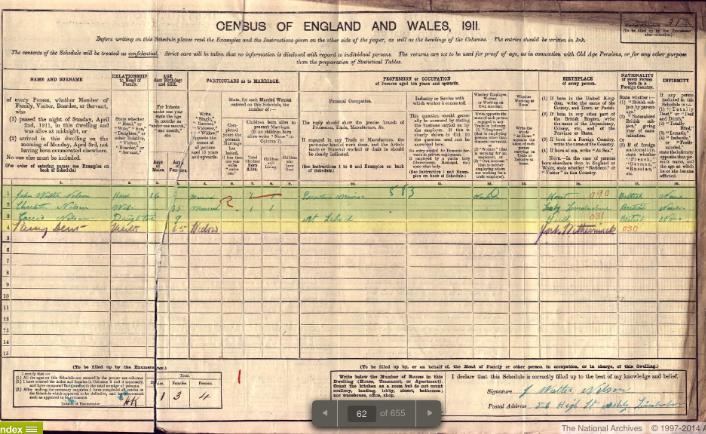
1911 census entry for Fanny Dent
The locations where Edward Dent and his family lived are shown on the map below, with some modern landmarks added to help place them for those who are unfamiliar with where these places are/were.
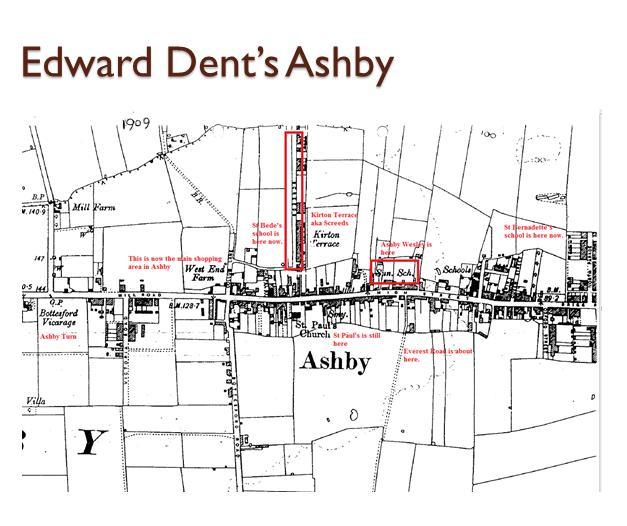
Based on the 1909 OS map of Ashby
Although we have no proof, it is almost certain that Edward Dent attended school at what was known at the time as the Elementary School. Education became compulsory in England from 5 – 10 years old in 1880 and the leaving age was raised to 12 in 1899. The 1891 Elementary Education Act made provision for the state to pay school costs of up to 10 shillings per child, making it far easier for families to afford to send children to school. We know that at age 15 he was working as a horseman on a farm. At that time, Ashby was far more rural than it is now and there were farms all over the area.
For some reason he decided to join the army which he was able to do as soon as he reached the age of 17. Perhaps he wanted a different job or to see the world. He was unmarried and had no dependents.
EDWARD’S MILITARY SERVICE
Edward was one of what later came to be known as ‘the Old Contemptibles’. He died on 1st November 1914 in the first battle of Ypres aged just 29. He had already been in the army since 1902 or 1903 having enlisted at Gainsborough. As a regular soldier he would have been given the option of going out with the B.E.F. (British Expeditionary Force) or remaining at home to train the men who were, by then, volunteering in large numbers. Edward chose to fight. His disembarkation date, with the 1st Battalion Lincolnshire regiment is given on his medal record as 25th August 1914. It may be worth noting here that at this stage in the war the fighting had not yet turned into the trench warfare which we have come to associate with the Western Front. Battles such as this one were fought over open ground with very little cover for the men under fire.
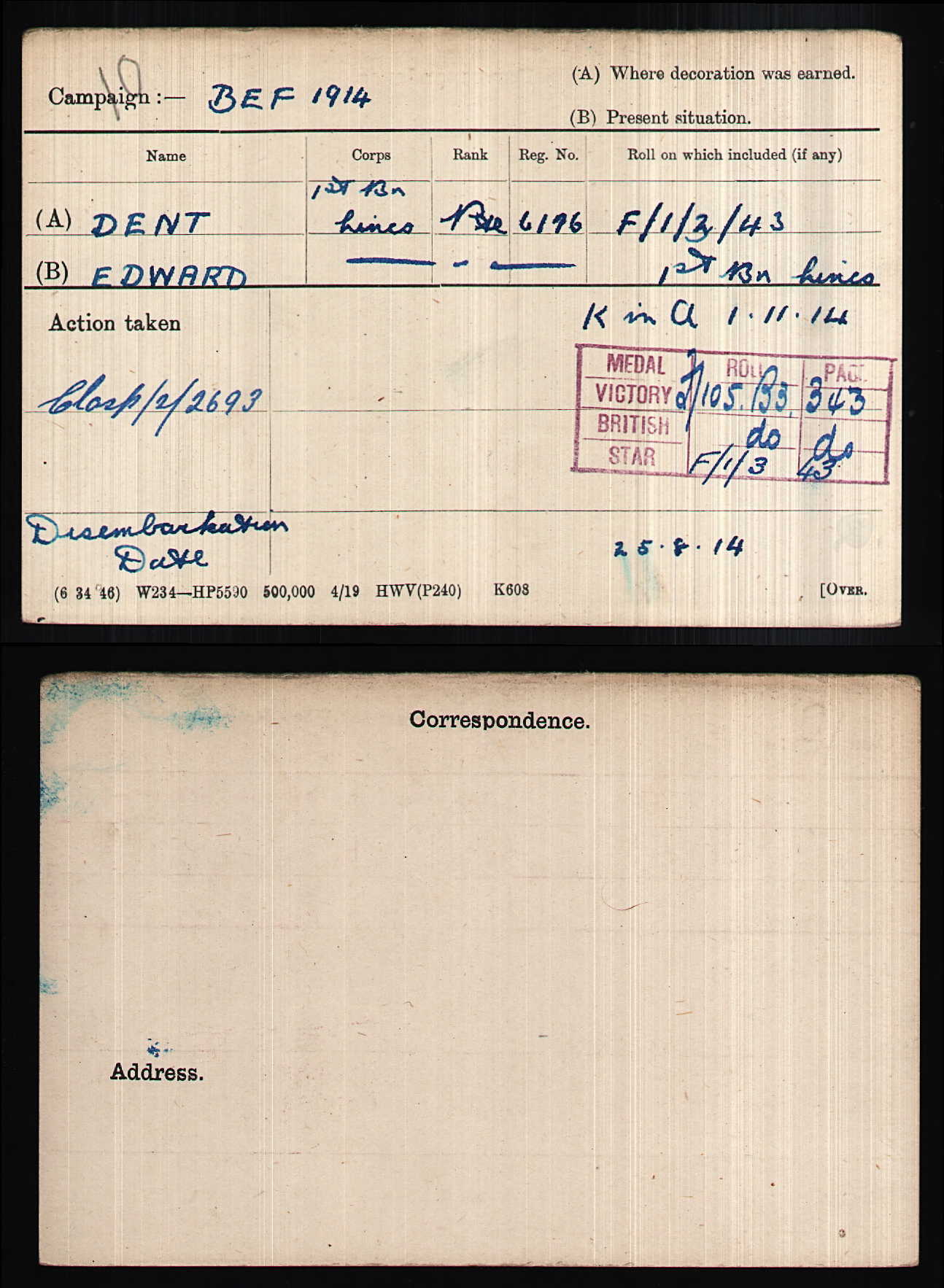
What follows is an extract from the War Diary of the 1st Battalion Lincolnshire regiment for the 1st of November. As you can see from the photo it is somewhat difficult to decipher but we have done our best to transcribe at least some of it. The transcript is in the printed out below this sample page taken from the online version of the original document. The diary paints a vivid, almost too real, picture of the horror of the fighting and the total confusion of orders, counter-orders, advances, attacks and retreats with the 2nd Lieutenant who wrote it using words like ‘death trap’. The diary itself makes for rather harrowing reading and although it may be regarded as a priceless historical document we have decided not to transcribe all of the relevant material nor reprint any more of the facsimiles of the original. Those readers who feel they might like to find out more can either use the internet ( details are given in the appendix) or access the actual documents at the National Archives in Kew.
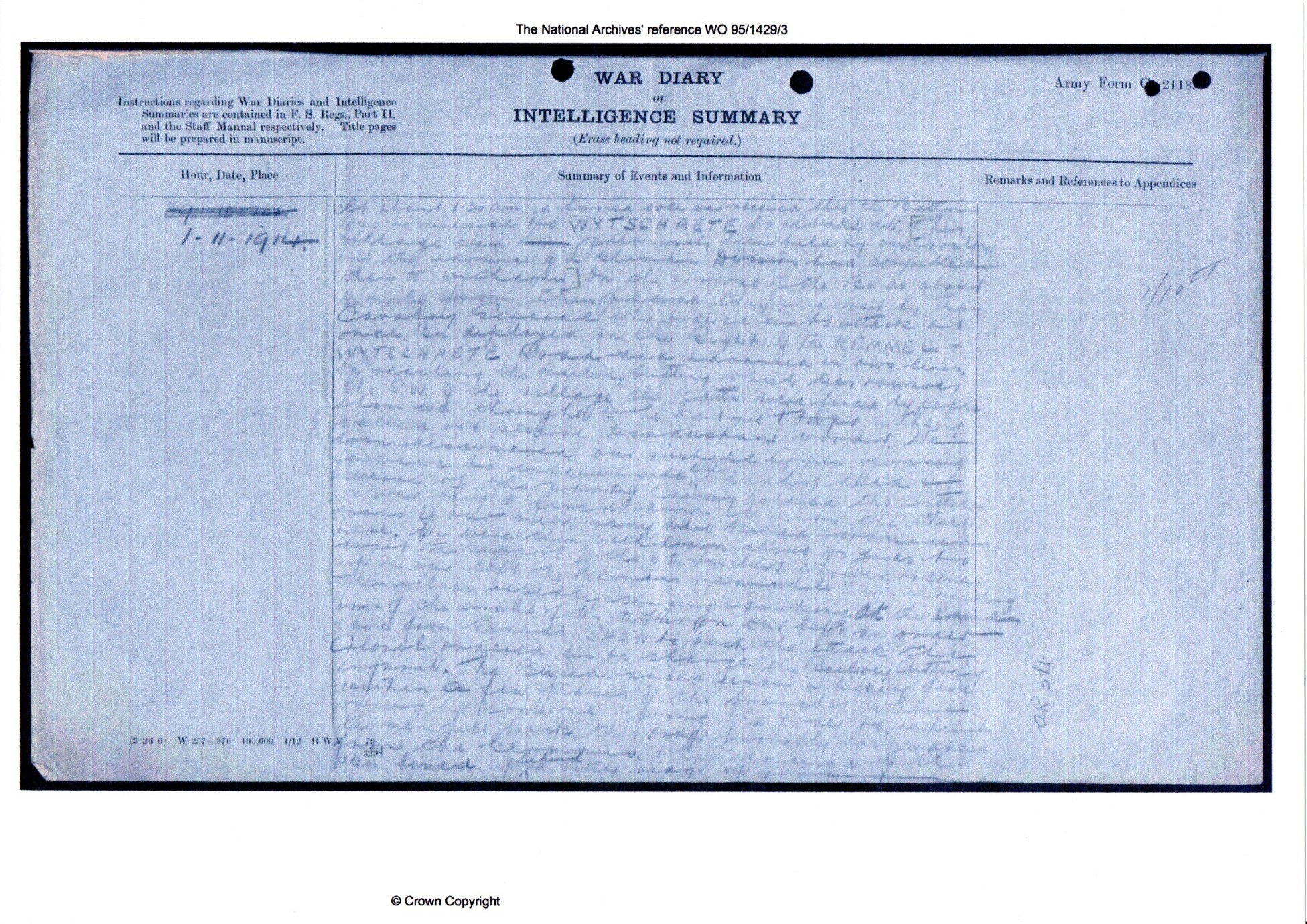
** Where gaps appear thus (.............) in the transcript it has been too difficult to decipher the online version of the original copy and where there is simply a space it is as in the original.
1 Lincs. Battalion War Diaries
28.10.14
Bn. remained in their trenches subjected to continual sniper and occasional shell fire from the enemy Howitzer Batteries.
11 killed & 9 wounded.
29.10.14
Bn. was subjected to occasional shellfire & that of snipers. About 7 pm orders were received that we were to be relieved by the 9th Gurkhas. Owing to the noise made by the native Regt. in taking over the relief was not effected as easily as the ones before. Twice the Germans were alarmed & opened heavy fire directed at the Regt. leaving the trenches. However we achieved our withdrawal just before dawn.
30.10.14
It rained all the afternoon and the night previous & the country was soaking. It was almost impossible to stand up in the trenches. Bn. proceeded to Vieille Chapelle nominally to have a rest. About 10am an order came that we were to return to NEUVE CHAPELLE. As the Bn. were moving off at 2pm a further order directed us to ESTAIRS where we went into billets in the farm house on the further side of the town. The men were very fatigued by heavy going and want of sleep.
31.10.14 Marched off at 6.45 am through NEUVE-EGLISE LINDENHOCK to KEMMEL where A& B comp were detailed to dig trenches facing East. Shortly after we had commenced digging an order was given to cease. Shortly afterwards we were sent into KEMMEL into billets.
1.11.14
At about 1:30 a hurried order was received that the Battalion was to march to WYTSCHAETE to attack it. (This village had previously been held by our cavalry but the advance of the German Division had compelled them to withdraw). On the arrival of the Bn. At about ¼ mile from this place they were met by the Cavalry General who ordered them to attack at once. Bn. deployed to the Right of the KEMMEL-WYTSCHAETE Road and advanced in two lines. On reaching the Railway Cutting which lies towards the S W of the village the Batt. were faced by people whom we thought to be Indian troops as they called out several Hindustani words. We soon discovered our mistake by men going forward to interrogate them .............. ...................... several of the party having woken the artillery on our right fired down upon the thick mass of our men. Many were killed and wounded here. We were then withdrawn about 100 yards to await the support of the 5th Fusiliers who were to come up on our left. The Germans meanwhile were rapidly entrenching using a smoking. At the same time as the arrival of the 5th Fus. from our left an order came from General SHAW to push the attack the colonel ordered us to charge the RAILWAY CUTTING in front. The Bn. advanced under heavy fire to within a few paces of the trenches ....................
Giving the order to retreat......... the men fell back.................
................................................................
separating a fallow field from one of turnips and about 100 yards from a position strongly held by the enemy. Behind us at about a distance of about 150 yards was a hedge row behind which was a fold in the ground which provided a certain amount of cover. To our left rear the country was absolutely open except for a thin thorn fence this however was to prove death trap. Until about 6:45 am we lay behind this ridge. As dawn broke we saw the people on our left returning and were given an order to cover them and the ........ of the London Scottish on our right. We hung on. Germans worked around our left flank. We were fired at by our own artillery in rear, by their guns in front and by riflemen on both flanks. The place became absolutely untenable and our only chance was to make a bolt for it. On Colonel Smith giving the word we got up and ran for our lives towards the dip. The enemy opening a murderous fire but probably owing to .............. and excitement many of their shots went high and many of us succeeded in reaching shelter. In this place the men were roughly formed up into line as we now had to group in long places like ............
On emerging from cover we again came under enemy fire but suffered very few casualties. The remnants of the Regiment were formed up by the Colonel and the Adjutant on the eastern side of the village of LINDENHOCK. Here we were joined by three other special reserve officers and about 100 men who had managed to escape. At this time the Bn. numbered 175. While the engagement was in progress two urgent messages were sent back asking for support. The first man was killed before he had gone 20 yards and the second man Private (no name given) although he was hit displayed the greatest gallantry and devotion by struggling on and making his way to the General. Later on the Regiment were put in trenches on MONT KEMMEL and in the evening were withdrawn and went to billets near LA CLYTTE. Here we were joined by reinforcements of 91 men under 2nd Lieut. SHAW 3rd Bn. Sherwood Foresters.
This brief extract gives us an idea of the absolute horror of what the soldiers endured in this the first battle of Ypres. The fighting on the 1st of November was later described as the Battle of Wytschaete-Messines and most of us will have heard of the battle for the Messines Ridge.
Of course none of this detailed information was ever made known to the families at home. At best they knew that their loved one had fallen in battle and in Edward’s case they didn’t even have the possibility of visiting his grave. He was one of the many thousands who were simply listed as missing and whose commemoration is their name inscribed on a panel of a memorial. In Edward’s case this memorial is the Menin Gate. This memorial designed, like the Thiepval Memorial, by Sir Edward Lutyens was opened in 1926 and there has been a daily act of remembrance held there ever since. Edward’s name is inscribed on Panel 21.
A great deal has been written about the first battle of Ypres and it is possible to obtain a large amount of information on line through internet sites run by the Commonwealth War Graves Commission, the National Archives, Lincolnshire County Archives, Ancestry .co.uk, Findmypast etc. and well-known online encyclopaediae such as Wikipedia.
The commemorative document relating to Edward which can be found on the CWGC website gives details about him, where he is commemorated as well as some information about the military action in which he was killed.
All images of material relating to WW1 are reproduced by kind permission of the National Archives and the Commonwealth War Graves Commission.
Below is a sample of the type of commemoration produced by CWGC and which are available online from a number of different sources.
